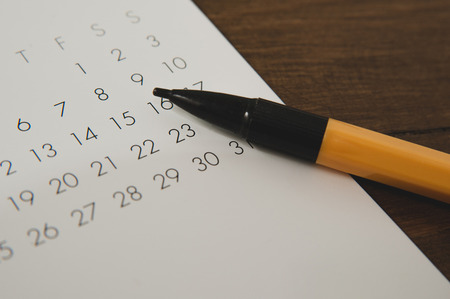1. Introduction to Pendulum Dowsing in America
Pendulum dowsing, sometimes called radiesthesia or simply “using a pendulum,” is a fascinating practice with deep roots around the world—including right here in the United States. At its core, pendulum dowsing involves suspending a small weight, often called a pendulum, from a string or chain and observing its movements to answer questions or locate objects. Many people use it today for purposes ranging from finding lost keys to making personal decisions, but its history in America goes back much further.
What Is Pendulum Dowsing?
Pendulum dowsing relies on the belief that the human body can pick up subtle energies or vibrations from people, objects, or locations. When someone holds a pendulum and asks a question, the movement of the pendulum—whether it swings back and forth, circles clockwise, or moves in another pattern—is interpreted as an answer. The process is simple and accessible; anyone can try it with just a small weight and some curiosity.
Basic Principles of Pendulum Dowsing
| Element | Description |
|---|---|
| Pendulum | A weighted object (like a crystal, metal piece, or even a ring) suspended on a string or chain. |
| User’s Intent | The question or focus held in the user’s mind during dowsing. |
| Movement Interpretation | The direction and type of swing are read as answers (yes/no/maybe). |
| Subtle Energy Response | The idea that unconscious muscle movements guide the pendulum due to subtle energies. |
Pendulum Dowsing’s Early Recognition in the United States
Pendulum dowsing made its way to America alongside European settlers who brought folk traditions with them. In colonial times and throughout the 19th century, many rural communities used various forms of dowsing—most commonly with sticks or rods—to find water sources on new land. Over time, these practices evolved and included pendulums as tools for divination, healing, and even decision-making. American spiritual movements in the late 1800s and early 1900s, such as Spiritualism and New Thought, helped popularize pendulum dowsing further by blending it with local beliefs and introducing it into everyday life.
2. Origins and Historical Development
Pendulum dowsing, as we know it today in America, has roots that reach deep into European history. The practice began in ancient times, with early forms of dowsing appearing in Germany and France during the 15th and 16th centuries. Originally, people used rods or sticks—often called “divining rods”—to locate underground water or minerals. Over time, this evolved into using pendulums for similar purposes.
The Journey from Europe to America
European settlers brought their traditions with them when they arrived in North America. Among these were various folk practices, including dowsing. In the new land, these methods adapted to local environments and needs. For example, finding water was critical for early American farmers and settlers, so dowsing became a popular tool on the frontier. Gradually, pendulum dowsing shifted from simply locating water or minerals to being used for personal insight, health questions, and spiritual exploration.
Key Developments in Dowsing Practices
| Time Period | Region | Dowsing Tool | Main Purpose |
|---|---|---|---|
| 1500s-1600s | Europe (Germany, France) | Divining Rods | Finding water and minerals |
| 1700s-1800s | Colonial America | Rods & Pendulums | Locating wells and resources |
| 1900s-Present | United States | Pendulums (varied materials) | Personal guidance, holistic health, spirituality |
Cultural Adaptations in America
As pendulum dowsing spread across the United States, it took on a distinctly American character. People from different backgrounds—Native American communities, European settlers, African Americans—blended their own beliefs with dowsing practices. In rural areas, pendulum dowsing remained connected to practical needs like finding water. In urban settings and during the New Age movement of the late 20th century, pendulum dowsing became more associated with self-discovery and alternative wellness.
![]()
3. Pendulum Dowsing in American Folk Practices
The Role of Pendulum Dowsing in Everyday Life
Pendulum dowsing, sometimes called “water witching” or “divining,” has long played a role in American folk practices. Settlers and rural communities often turned to pendulums and other simple tools when seeking answers about their land, health, or daily concerns. In places where scientific resources were scarce, people relied on tradition and intuition. Pendulums were easy to make—just a string with a weight at the end—and quickly became part of the toolkit for many Americans, especially in rural areas.
Pendulum Dowsing and Folk Healing
In addition to finding water, pendulum dowsing was also used as a folk healing method. Healers in Appalachia and the Midwest would swing a pendulum over a person’s body to diagnose illnesses or find “blocked energies.” Sometimes, the pendulum was used alongside herbal remedies or prayers, blending spiritual beliefs with practical healthcare. This integration reflected the self-reliant spirit of early American communities.
Water Divining Across Regions
| Region | Local Terms | Common Uses | Unique Traditions |
|---|---|---|---|
| Appalachia | Water Witching | Finding wells, diagnosing illness | Combines dowsing with Bible verses |
| Midwest | Doodlebugging | Locating underground streams | Pendulums made from local stones |
| Southwest | Dowsing | Searching for minerals and water sources | Integrates Native American traditions |
| Northeast | Diving Rod Use | Mapping old farmland water routes | Passed down through family lines |
Pendulum Dowsing in Rural Life
Pendulum dowsing was not limited to finding water or health advice. Some families used it to decide when to plant crops or predict weather changes. Because it required no special training or expensive equipment, anyone could try their hand at it. While skeptics existed, many folks saw pendulum dowsing as an important part of making decisions when faced with uncertainty.
4. Cultural Perceptions and Controversies
How Americans View Pendulum Dowsing
Pendulum dowsing has a unique place in American society. Some people see it as a fascinating spiritual or metaphysical tool, while others are skeptical and view it as pseudoscience. The way pendulum dowsing is perceived often depends on personal beliefs, education, religious background, and exposure to alternative practices.
Levels of Acceptance and Skepticism
| Group | General Attitude Toward Dowsing |
|---|---|
| Spiritual Seekers | Curious and open-minded; often use pendulums for guidance or meditation. |
| Scientists & Skeptics | Doubtful; frequently ask for scientific evidence, often dismiss dowsing as superstition. |
| Mainstream Public | Mixed feelings; some are interested in trying it for fun, while others are indifferent or skeptical. |
| Religious Groups | Varied; some see it as harmless, others may consider it incompatible with their beliefs. |
Pendulum Dowsing in Popular Culture
Pendulum dowsing sometimes appears in movies, TV shows, and books. It is usually shown as a mystical or magical practice, often linked to fortune-telling or solving mysteries. In the 20th century, dowsers were even featured in American newspapers and magazines during times of drought or when searching for missing items. Today, social media platforms like TikTok and YouTube have brought a new wave of interest among younger generations, who share tutorials and personal stories about using pendulums.
Stereotypes and Myths
- Pendulum users are often portrayed as eccentric or mysterious.
- The practice is sometimes confused with witchcraft or the occult in popular media.
- Despite skepticism, many Americans still associate pendulum dowsing with curiosity about the unknown.
The Ongoing Debate
The debate over pendulum dowsing continues in America. While some communities embrace it as a helpful tool for personal insight, others question its validity. This mix of opinions keeps pendulum dowsing both controversial and intriguing within American culture.
5. Modern American Applications and Communities
The Everyday Uses of Pendulum Dowsing in the U.S.
Pendulum dowsing has found a place in modern American life, often as a tool for personal insight, wellness, and decision-making. While some people use pendulums for finding lost objects or making choices, others rely on them as part of spiritual or holistic practices. Many Americans enjoy using pendulums to check food sensitivities, explore questions about relationships, or gain clarity during meditation sessions.
Growth of Dowsing Organizations and Groups
Across the United States, dowsing enthusiasts have come together to form clubs and organizations that support learning and community. The American Society of Dowsers (ASD) is one of the most prominent groups, offering conferences, workshops, and educational resources for both beginners and experienced practitioners. Local meetups and online communities also make it easy for people to share experiences, ask questions, and develop their skills.
Key Dowsing Organizations in America
| Organization Name | Activities | Location/Reach |
|---|---|---|
| American Society of Dowsers (ASD) | Conferences, classes, publications | National (USA) |
| Ozark Research Institute | Workshops, research projects | Arkansas-based, national events |
| Dowsers West Coast Conference | Annual gatherings, networking | West Coast (California/Oregon) |
Cultural Significance Today
Pendulum dowsing remains a vibrant part of Americas alternative wellness scene. Its appeal lies in its simplicity and accessibility—anyone can try it with just a string and a weight. For many Americans, dowsing is not only about finding answers but also about connecting with intuition and exploring new ways to understand themselves and their world. This ongoing interest continues to shape communities and spark curiosity about the unseen forces at play in daily life.


